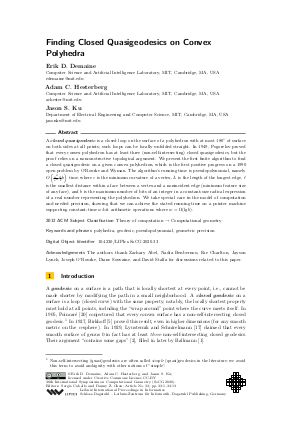LIPIcs.SoCG.2020.33.pdf
- Filesize: 0.66 MB
- 13 pages

 Creative Commons Attribution 3.0 Unported license
Creative Commons Attribution 3.0 Unported license















Feedback for Dagstuhl Publishing